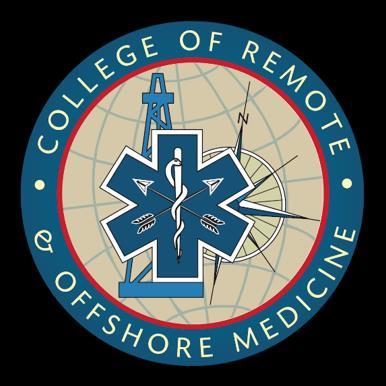
























You know, life's really all about the connections we make. The family and friends we have built up into this incredible collection of experiences and memories that we hold onto forever And in that spirit, CoROM is very much like a family Many of you have been fantastic supporters of the College for a long time, some of you joined the family by first taking a CPD class and then


John Clark JD MBA NRP
becoming a Member (MCoROM). Others became part of the family when they signed up for the Bachelor paramedic program or the Master in Austere Critical Care. And don’t forget the long list of faculty, staff, contractors and others that are in the CoROM orbit
I wanted to highlight one CoROM family member in particular He is someone who exemplifies how important those relationships are For anyone who's visited Tanzania’s Kilimanjaro Christian Medical Center (KCMC) or Kibosho for their clinical rotations, I'm sure you've met Johnny Marenge. Johnny is an integral part of our family. He provides transportation to and from the airport, takes students and faculty to get groceries, to dinner, and most importantly is the College’s boots on the ground in Tanzania One might call him a “fixer”! I had a great opportunity to sit down with Johnny recently and ask him a few questions:
John Clark: “Tell us a bit about your background.”
Johnny Marenge: “I appreciate you giving me the opportunity to tell you about my life. I was born on September 15, 1987 and I am the last child in a family of eight children I finished primary school in 2002 I got good grades but I was not able to continue my studies because my mother's resources were a bit limited, especially after my father’s death in 1997. I came to Moshi city in 2006 and started working in a car wash washing cars After a year in Moshi, I went to driving school for 6 months and when I finished, I got a job as a taxi driver It was this job that led me to CoROM I knew Aebhric from 2018 through my friend Professor Mike Kaufman from the United States. Dr. Kaufman introduced me to Aebhric who hired me on the spot! I have been working with CoROM ever since I would like to express my sincere gratitude to the College and also especially a thank you to you and Aebhric That's my story in a very short way ”

Johnny



JC: “What are you most excited about with working with CoROM?”
JM: “You have made me realize the importance of education and quality, good health and being able to take care of my family. I care a lot. You have become very good people in my life and my family CoROM College has increased my income and has become a good fit for me.”
JC: “What is one thing you’re passionate about outside of work?”
JM: “What I like outside of work is being close to my family and thinking about my future life and thinking about improving my business more.”
JC: “What is the best thing about Tanzania in your opinion?”
JM: “What is good for Tanzania is the peace and tranquility we have. And love.”
JC: “Is there anything else you'd like us to know about you?”
JM: “I would like to ask, if it happens, that a permanent job is found for me. I would be very happy in the future I really like working with CoROM College ”
Having Johnny on the ground in Tanzania makes an incredible difference to our students and takes an enormous weight off my shoulders knowing that Johnny is 100% on the job and will ensure that our people will be taken care of and have a local resource day and night. Thank you, Johnny, for all that you do for the College!!
Turning to another matter of importance, we are pleased to announce the addition of two highly qualified individuals to our faculty
Dr. Sean Bilodeau will be collaborating with Dr Dioszeghy on the Master of Science program in Austere Critical Care Dr Bilodeau is currently serving as the Emergency Medical Services Fellow at MaineHealth Maine Medical Center in Portland, Maine, USA. His medical education was completed at the University of New England, followed by a residency in Emergency Medicine at Brown University He maintains an active clinical practice as an emergency physician at the primary Level 1 trauma center in Maine and holds a significant role in the Portland Fire Department's physician field response. His professional interests are centered on prehospital clinician education, and his research agenda is focused on high-acuity, low-occurrence procedures and advancements in prehospital training methodologies


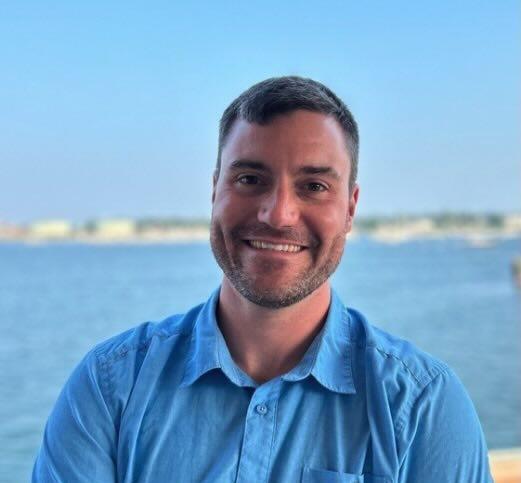

We are also delighted to welcome Dr. Paul Bromley, who brings a wealth of diverse experience to the DHS program. Dr. Bromley is an Advanced Clinical Practitioner in emergency medicine and a Paramedic
His career trajectory includes service in the UK armed forces and military intelligence Academically, he holds MSc and PhD degrees and has completed a post-doctoral fellowship in academic cardiology. Subsequently, Dr. Bromley worked as a Consultant Scientist in cardiology and lectured in applied physiology, concurrently maintaining positions in prehospital and emergency medicine
His seventeen years of service, encompassing both full-time and reservist roles within the military, provided his initial exposure to expedition medicine and disaster relief Since that time, he has become a highly accomplished expedition medic within the UK, frequently serving as the sole medical support for expeditions spanning Africa, Asia, South America, and Europe
Furthermore, he has accrued valuable experience in remote healthcare delivery within the Channel Islands and through his involvement with search and rescue teams Dr Bromley has operated in a wide range of challenging environments, including mountainous, desert, tropical jungle, and Arctic terrains.



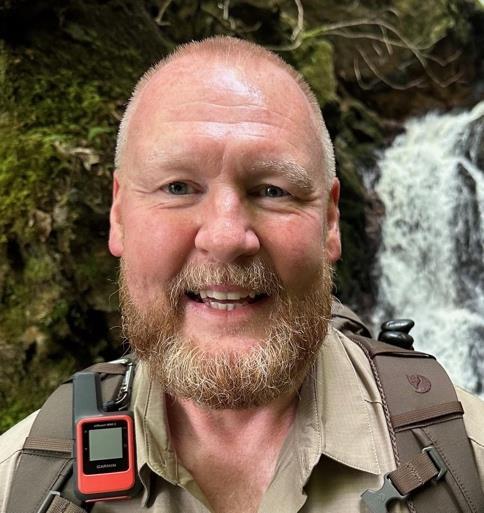

We live in interesting times, as the apocryphal Chinese curse has it, and there is no better example of that than the Special Feature served up on page 7 by David Eubank and the Free Burma Rangers David was on the ground in the jungles of Burma when the 7 7 magnitude earthquake struck the beleaguered country on 28 March, and shares with us the tragic story of millions of internally displaced persons beset by disasters both natural and man-made
I first worked with the Free Burma Rangers in 2011 on a humanitarian mission into Burma sponsored by Team Rubicon. David, a former U.S. Army Special Forces officer who served in the same unit as myself and CoROM Dean Emeritus Aebhric O’Kelly, was and is a larger-than-life personage, and I know of no greater exemplar of faith and action than him.
The recent passing of Professor Dickson Despommier was a severe blow to the CoROM family. As we lament this loss, we take comfort that his legacy of enthusiastic medical education is stamped into the DNA of the educators who continue to admire him and seek to emulate him. A brief In Memoriam honouring Professor Despommier appears on page 25.
Rounding out this issue of The Compass are contributions from Rhodri Jordan, Aebhric O’Kelly, Dr Derrick Tin, Dr Glenn Geelhoed, and the many smaller features I enjoy putting together every quarter
Wishing health and peace to all,
2 April 2025
Jason Jarvis is a paramedic and former U S Army Special Forces Medic (18D) with years of accumulated experience in countries such as Laos, Burma, Iraq, and Afghanistan He is a freelance medical educator who teaches for CoROM, the U N , the U S Department of Defense, Harborview Medical Center, and Seattle Children’s Hospital Jason is a PhD student in Widener University’s Health Professions Education program and holds a master’s degree in Infectious Diseases from the London School of Hygiene and Tropical Medicine.




Jason Jarvis MSc 18D NR-Paramedic


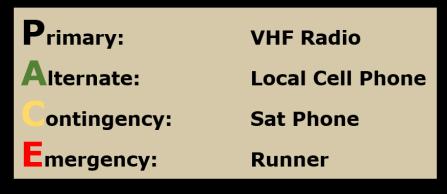


33






On 28 March 2025, the people in the Mandalay and Sagaing districts of Burma were hit with a devastating earthquake. The earthquake’s magnitude was 7.7, leaving an estimated hundreds – possibly thousands – dead in its wake. Shortly after the earthquake, the Burma Airforce launched airstrikes in northern Shan State. The airstrikes – alongside artillery and ground attacks in different areas of Burma – continue despite the earthquake
In Burma we have two kinds of devastation: one natural, and the other unnatural and completely man-made. Every country faces its own challenges and natural disasters, but on top of this earthquake, the dictators of Burma have added their own misery to the people.
We are in Burma right now on a humanitarian relief mission and felt the earthquake strongly in southern Shan State During the earthquake, we were in the jungle where almost all the people are hiding as they have been hunted and chased by the military for over three years now.
Even though the ground shook and the trees swayed, no one was injured; there were no buildings to collapse onto the people because they have been chased from their homes by the military The nearby town of Mobye had already been devastated by Burma military and reduced to rubble and so there were no buildings there to collapse.
Just across the border in Karenni State it is the same. Over 350,000 people – almost the entire population of Karenni State – have been displaced by attacks of the Burma military. There are constant attacks on the ground and from the air as the Burma military uses ground forces, artillery, jet fighters, Y-12 bombers, and drones to kill their own people
The night before the earthquake we held a funeral for one of the young men killed by the Burma army who was about to join our group


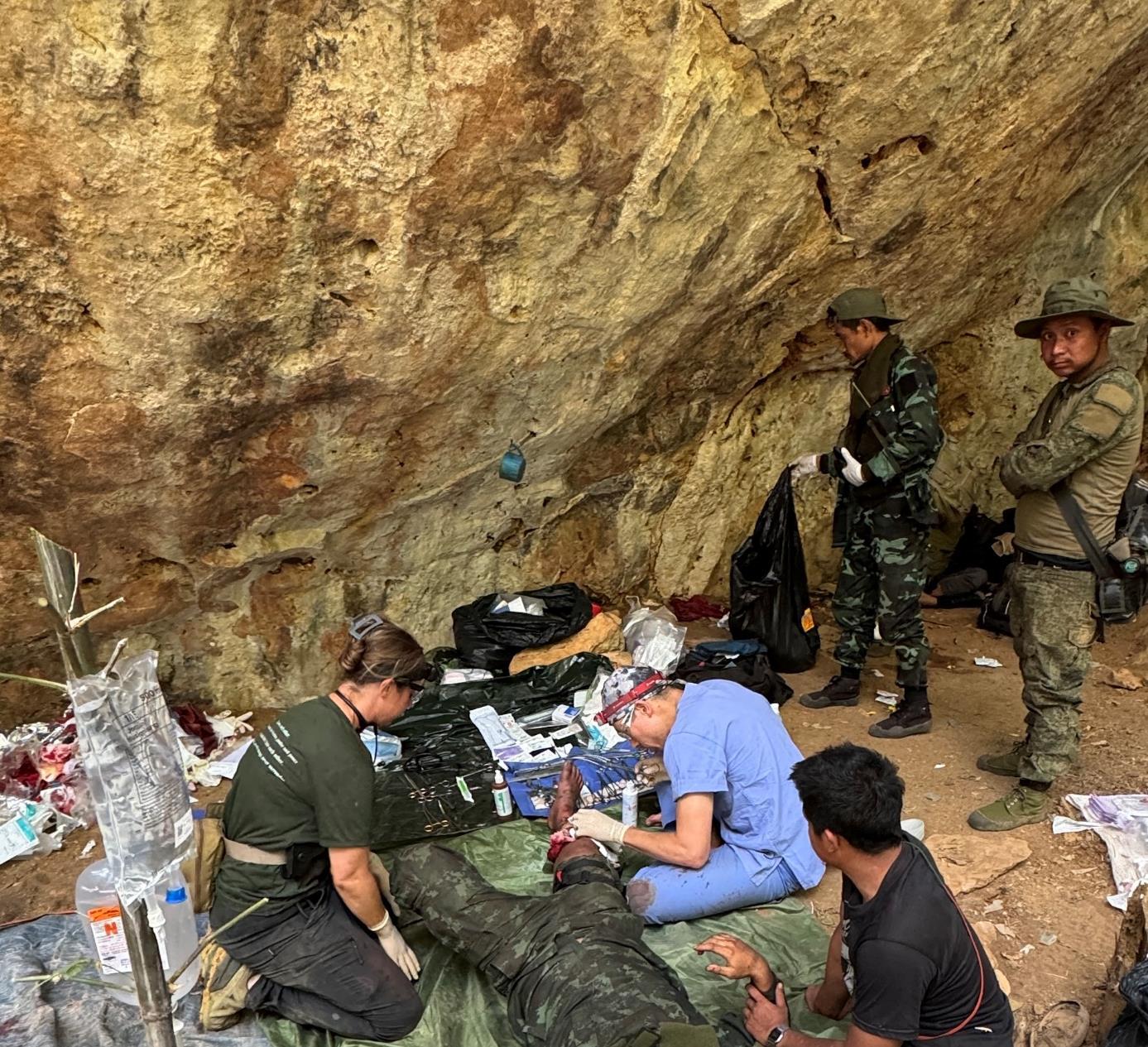

Now we must contend with this earthquake, and because it is in the dictators’-controlled areas we do not have direct access. The Burma military blocks the way and has provided very little assistance to the people. Despite this, local community-based organizations and groups of people are doing their best to help. These organizations were immediately helping to dig victims out of the rubble and assisting as much as they could; however, they need more help in the form of heavy equipment and specialized rescue and medical teams to extract both the living and the dead.
Also needed is extensive medical support for the injured as well as humanitarian assistance of food and shelter and comfort for all the people who now have no home. This assistance needs to go directly to the affected communities and not through the government. There are local organizations and international organizations that can do this very well and are ready and willing to help.
We pray that charitable organizations will be allowed by the Burma government to render aid, and we are grateful for the local groups as well as the international groups that want to help
We appeal to the Burma military to stop their attacks and allow assistance to go directly to the people, and to stop these man-made disasters on top of the natural disaster.
We pray that the hearts of the Burma military will change and that there can be a representative democracy with justice and freedom and reconciliation for all, including the military.
God bless you,
David Eubank and the Free Burma Rangers





“LOVE
EACH OTHER. UNITE AND WORK FOR FREEDOM, JUSTICE, AND PEACE. FORGIVE AND DON’T HATE EACH OTHER.
PRAY WITH FAITH, ACT WITH COURAGE, NEVER SURRENDER.”
The Free Burma Rangers (FBR) is a multi-ethnic humanitarian service movement working to bring help, hope and love to people in the conflict zones of Burma, Iraq, and Sudan Working in conjunction with local ethnic pro-democracy groups, FBR trains, supplies, and later coordinates with what becomes highly mobile multipurpose relief teams. After training, these teams provide critical emergency medical care, shelter, food, clothing and human rights documentation in their home regions
In addition to relief and reporting, other results of the teams’ actions are the development of leadership capacity, civil society and the strengthening of inter-ethnic unity. The teams are to avoid contact with the Burma Army or other attacking forces and operate under the protection of the ethnic resistance armies. However, they cannot run away if the people they are helping cannot escape the attacks Men and women of many ethnic groups and religions are part of FBR.








The Free Burma Rangers were formed during the Burma Army offensives of 1997, when villages were destroyed, people killed and over 100,000 people fled their homes; over 1 million people are still displaced inside Burma In the face of the overwhelming force by the Burma Army, the Free Burma Rangers was formed with the idea that no one can stop people from giving love and serving one another
During this time the Ethnic Nationalities Seminar at Mae Tha Ra Hta was coordinated and supported by FBR; and the Global Day of Prayer was initiated after Dave Eubank met with Aung San Suu Kyi in 1996.
The first team training took place in 2001, and 2005 saw the first training for full-time teams Each step taken to grow the Free Burma Rangers has been at the request of the local ethnic leadership
Since 1997, FBR has trained over 250 multi-ethnic relief teams and there are 71 full time teams active in the Arakan, Chin, Kachin, Karen, Karenni, Kayan, Lahu, Mon, Naga, Pa-Oh, Shan and Ta’ang areas of Burma The teams have conducted over 800 humanitarian missions of 1-2 months into the war zones of Burma On average around 1,000 patients are treated per mission with 2,000 more people helped in some way The teams have treated over 500,000 patients and helped over 1,100,000 people
https://www.freeburmarangers.org/get-involved/




When educating & training medics for remote site/offshore we tend to concentrate on the 'hard' skills surrounding clinical care, and often overlook the 'softer' skill/knowledge elements that may be required. In a previous article (available on LinkedIn) I talked about the 'Medical Intelligence Assessment', and this is a bit of a follow-on; at some point in your career may be called upon to either contribute to, or develop from scratch, a Medical Emergency Response Plan (MERP). So, what should it contain? What do you need to consider including?


The Medical Emergency Response Plan: Considerations for a General Framework
The Medical Emergency Response Plan (MERP) is a detailed strategy created to efficiently handle medical emergencies in different locations like workplaces, schools, public venues, or community organizations. It includes steps, responsibilities, and resources needed to quickly respond to emergencies and prevent harm to people's health and safety.
“An ERP, associated with each phase of the expedition, should be developed. This reference document includes information to enable any member of the team to respond appropriately to an emergency.”1
Here are some thoughts on areas that should be considered within any MERP framework.





It is important to consider potential medical emergencies when assessing and planning Risk assessments should be conducted to evaluate the possibility and seriousness of different emergencies. A team of professionals from various disciplines should be put in charge of creating and executing an emergency response plan.
It is important to think about emergency communication by developing protocols to notify the right people and authorities during a medical emergency, create clear communication channels such as phone systems, two-way radios, or other tools and, very importantly, train individuals on how to communicate effectively in emergency situations. When developing your communication plan, it is useful to follow the PACE framework, standing for Primary, Alternate, Contingency and Emergency

The main way to communicate effectively is through your primary communication channel, such as phone calls, text messages, emails, or a communication app like Slack or Microsoft Teams. It's important to make sure that everyone knows how to use this channel efficiently and to establish protocols for using it in emergencies. In case the main communication channel experiences issues or gets too busy, having a backup is crucial For instance, having another phone number, an alternative email address, or a different communication app can be helpful. Make sure that all individuals are aware of how to utilize and access this secondary option. Regularly test the backup option to verify its dependability In cases where both the main and backup communication methods are not accessible, it's important to have a backup plan in place This could include using two-way radios, satellite phones, or social media platforms. Make sure that everyone understands how to use the equipment or platforms effectively. Regularly test the backup communication method to ensure that it is working correctly In dire situations where normal communication methods have proven ineffective, resort to emergency signals such as flares, smoke signals, or beacons. Make sure everyone knows how to use these signals and devices in case of emergencies. Train personnel on the proper protocols for activating and responding to emergency communication devices
Develop detailed and specific emergency procedures/instructions on how to handle different medical emergencies such as heart attacks, severe allergic reactions, and injuries you are potentially going to encounter in the specific operating environment you will be working in (this should be identified through your pre-deployment ‘Medical Intelligence Assessment’) Assign specific duties to each member of the emergency response team, including first aiders, medical professionals, and administrators Also, provide guidelines on how to safely evacuate the area, prioritizing the well-being of everyone present. When considering employee development, it's important to focus on training and education. Make sure to schedule consistent training sessions for all team members to help them identify and react to medical emergencies effectively Additionally, consider offering certification programs in areas such as first aid, CPR, and other important skillscertification is a powerful incentive for people to engage with training. Organizing drills and simulations can also be beneficial in honing emergency response protocols and enhancing preparedness There is also an element of self-preservation involved as, often as not, you will be the only trained medical professional on task and who’s going to take care of you if you end up being the patient?




Please make sure to prioritize equipment and supplies, making sure essential medical equipment like defibrillators, first aid kits, and emergency medications are available and well-maintained Keep an ample stock of medical consumables such as bandages, gloves, and medications. Create protocols for consistently checking and restocking supplies.
In times of need, it is important to work together with outside resources like local emergency services, hospitals, and medical professionals. Make connections and build relationships with these organizations Create plans for requesting help and collaborating with outside help during emergencies Share contact information and set up communication methods for effective teamwork.
“Care of the trauma patient is a team effort. The response to a critical trauma patient begins with the prehospital care provider and continues in hospital. Delivering information from the prehospital setting to the receiving hospital allows for notification and mobilization of appropriate hospital resources to ensure an optimal reception of the patient.
Keeping good records and assessing the situation are important - if it's not documented, it's like it never happened! Make sure to keep detailed records of all medical emergencies, such as incident reports, patient evaluations, and results Have discussions after each emergency to pinpoint areas that can be improved and adjust the emergency plan as needed. Stay on top of the plan by reviewing and revising to accommodate any changes in staff, protocols, or rules.
A properly developed Medical Emergency Response Plan helps organizations reduce the effects of medical emergencies, offer prompt and suitable care to individuals requiring assistance, and guarantee the safety and welfare of all individuals present.
References
1 Dallimore J. et al. Oxford Handbook of Expedition and Wilderness Medicine 3e. UK: Oxford Medical Handbooks; 2024 P 556
2 Mosesso V, Holtz M Patient Assessment and Management In: Gridley D, Senior Managing Editor PHTLS: Prehospital Trauma Life Support, Military Ninth Edition. Massachusetts: Jones & Bartlett Learning; 2021 P 190



38-year-old man with a fifteen-year history of a progressive “growth” on his left foot.
At the door are at least two dozen patients with lumps and bumps who are circulating at the stairs leading up into the Mobile Surgical Unit (MSU) operating room, and we have skin closure sutures for about six patients left.


The clinic is open and they are still screening newcomers including some of the big cases that are seeking the expertise that the Mission To Heal (M2H) trucks represent, and a few that are beyond the capacity of this Health Center IV since they need both anesthesia and an inpatient service for hospitalization follow-on care – and, in at least one instance, a prosthetist and physical therapist
A 38-year-old very youthful-looking fellow limps to see me with his pant leg slit open and hand-stitched to accommodate a “bell-bottom flare” for his left leg. He has a very enlarged left foot which is destroyed by a growth that is fungating and expansive. We are the first health-care-practitioners to be seeing him for this problem and it is a classic end-stage situation which he and everyone else should immediately recognize has a single solution. That leg is no longer an asset and must come off.




He is 38 years-old, otherwise fit, and this problem with his foot has been progressive for the last 15 years When asked if he could get to Kabale for the definitive treatment of this problem (the single most crucial service needed is that of a prosthetist, since I, or most anyone, can remove that leg, but to rehabilitate him at his age he needs to have an artificial limb) the response is standard: he has no money for the transport for the referral – a trip of thirty kilometers. Getting him there is, of course, the first problem he sees as the one to be overcome, but there are at least another fifteen years to be madeup for in foregone resolutions to be overcome
He needs to plan on a year of rehabilitation and that involves how he is supported during this interval and the availability of such resources as physical therapy to teach him how to walk with a prosthesis after operation. There is no urgency in removing the limb, since he can hobble on this useless extremity which is at least still attached to him, whereas he would have to learn to accommodate and use a prosthetic limb to achieve a working status.
Here is the “Burden of Illness in the Developing World” in a personal picture of end-stage neglected disease More than an operation, he needs a health care system, and that, of course, in a remote rural environment, is a non-starter To say that the “Ugandan Health Care System has failed him,” is an obvious statement of fact. But the resolution of that is not likely to be the development of such social services here in the Kamwezi environment where a rutted road and running water are the biggest intrusions of modernity, let alone rehabilitation services only found in high concentrations of dense populations in urban centers, with specialists and welfare, insurance and payment systems – all of which are likely to be wanting for folk like him in ANY capital city to which he might be dropped into it like a jettisoned “ET”, as a total misfit for any of a score of reasons, chief among them, poverty
If he cannot afford the boda-boda (two to three dollars?) to get to the nearest town, there is little hope he might be able to find access to services that will likely cost his lifetime income one hundred times over in just the next year. This is a disease of high morbidity, yet, not at all a critical condition of high mortality He is not really uncomfortable, just limited in his mobility A hundred options are foreclosed for him at the working age of 38 because of it. There might be a valid case made that he remain as he is in his local environment and allowed to live his severely restricted quality of life, rather than forcing upon him a medical treatment that is so much at odds with his character and lifestyle. There are few social services, and those that exist are not funded publicly.
As happens so often in the USA, we can attempt to “medicalize a solution to this social problem” since it would be more likely to find funds available to at least initiate such care, even if rarely complete it. In this instance, this benign neglect is precisely what is most likely, and if and when I were to return to Kamwezi in another five years, he will be here in a condition not much changed, but certainly not improved His hope for something more definitive would be for me, or someone else who might be made aware, to uproot him and drag him into a totally foreign environment, even if it is only on the far side of this mountain range – and drop on him an investment of a size that would purchase an apartment house complex in Kabale, the kind of nest egg which would be purloined from him within a heartbeat by poseurs who state that they will help him as they are handsomely helping themselves Within a few weeks, he would be in the same status as he is now, except uprooted from his home and family and all things familiar, and at the mercy of an entirely foreign and aggressively exploitative series of agencies – and likely worse off and terminal He would have to somehow make his way back here to Kamwezi where at least he is cared for among known family and friends. He remains here, if there is anyone out there eager to adopt an adult full-time dependent for life!
CT image of the patient




I have had many patients with this end-stage debilitating disease To give it a name that is generalizable; Mycetoma.
Since 1842 when Gill described it while he was working in the British Raj territory of Madura in India, it got the name “Madura Foot.” It is actually more frequently seen in the areas of Africa where I have been working – most particularly along the Great Rift Valley, around Lake Turkana, and is unusually prevalent in Sudan In the outskirts of Khartoum, I had even gone to their special Mycetoma Hospital where there is a unit dedicated to the management of this tropical medical disorder.
It is a granulomatous inflammation often provoked by subcutaneously infiltrated fungi (Actinomycetoma) or can be superinfected by bacteria through the open wounds, most often colonized by anaerobic bacteria, leading to the kinds of osteomyelitis of bone often seen in end stage “fetid foot” of diabetes due to the vasculopathy of diabetic endarterioles. Sometimes, the output from the draining sinuses of the distorted tissues of the foot look like chemical crystals and are designated as orange or black “sulphur granules.” The name is due to their appearance only, since there is nothing “sulphuric” about these spores that are the ejected means by which the fungus propagates into the environment until incubated in the puncture wounds of the next victim that contracts this Mycetoma condition.
Mycetoma is distinct in origin from “podoconiosis” which is a clinically similar granulomatous inflammation affecting the extremities, but the cause in the cases of podoconiosis is an irritant from silicate sands introduced into the subcutaneous tissues, which might become secondarily infected; but podoconiosis is primarily an inflammatory reaction to mechanical irritation of the non-biological inflammatory agents leading to lymphangitis and edematous breakdown – so called “non-parasitic elephantiasis ” In the end-stage, the destruction of the foot is the common final pathway that leads to the dilemma discussed above, in which stability and mobility are compromised and then lost, and in late presentation that comes from neglect, (in the futility of treatment, the ignorance of the possibility of treatment or its inaccessibility) it all comes to the common cause and effect – poverty leads to unmanageable morbidity, and distant specialized treatment options might just as well be on some other planet. If it is a fungal infection, cannot anti-fungal treatment be employed? Yes, it is, but to no avail. The slow-growing fungal hyphae keep multiplying with whatever treatment is used, and even liposomal-enzyme-encapsulated antifungals and hyperbaric oxygen treatment and a number of temporary attempts to slow down the inexorable progression of the inflammatory destruction of the foot does not hamper this disease from continuing to the end-stage.
Even the infected foot is often better accommodated than a prosthesis; so the inevitable amputation is postponed as long as possible until the burden of carrying the increasingly useless extremity outweighs the new set of obstacles to be overcome in post-amputation prosthesis management and practice learning to bear weight and walk. Thus, the long process might often extend beyond the rehabilitation potential of the patient, who may, because of age or infirmity, decline the prosthetic rehabilitation after amputation relieves the burden of the personal and social objections to the useless limb’s continued dominant presence.
CT image of the patient
This litany of medical futility re-enforces the primary assessment: Mycetoma is a social problem in an example of the end-stage effects of poverty, with inadequate “medicalization response” to the primary social disorder
Hyphae of Madurella mycetomatis as seen under phase contrast microscopy. Image credit: Wikipedia




Dr. Glenn Geelhoed received his BS and AB cum laude from Calvin College and MD cum laude from the University of Michigan. He completed his surgical internship and residency through Harvard University at Peter Bent Brigham Hospital and Boston Children’s Hospital Medical Center. To assist in developing further volunteer surgical services in underserved areas of the developing world, Glenn completed masters degrees in international affairs, epidemiology, health promotion and disease prevention, anthropology, and a philosophy degree in human sciences.
He still works as a professor of surgery at George Washington University Medical Center in Washington D.C. and is a member of numerous medical, surgical, and international academic societies. Glenn is an avid game hunter and runner. He has completed more than 135 marathons across the globe. He is also a widely published author accredited with several books* and more than 500 published journal articles and chapters in books. He has two sons and five grandchildren.





Catastrophic bleeding from inguinal injuries presents a critical challenge in prehospital and austere environments, in which traditional haemostatic interventions may be in short supply or completely unavailable. The inguinal region contains major vascular structures, including the femoral artery and vein, making exsanguination a rapid and life-threatening consequence of injury


Aebhric O’Kelly M.Psy DTN FRSM FAWM
Standard treatment protocols involve applying direct pressure, haemostatic dressings, and wound packing to control haemorrhage However, these techniques are often insufficient when dealing with high-velocity trauma or deeply-penetrating injuries Commercial junctional tourniquets (TQ), such as the SAM Junctional Tourniquet, are designed to occlude the common iliac artery flow and have demonstrated efficacy in military and prehospital environments Despite their effectiveness, these devices may not always be available in austere settings, necessitating alternative solutions
Improvised techniques are crucial in scenarios where standard equipment is inaccessible One approach involves using a windlass-based TQ system, such as a tightened triangular bandage with a rigid object as a mechanical aid to exert pressure over the common iliac artery A folded SAM splint or rigid water bottle can be positioned superior to the injury site, and a limb TQ can be placed over the top and tightened until the pedal pulse can no longer be felt. The problem with a water bottle is that it can easily slip out from under the TQ. Using duct tape can help stabilise it, but a flatter option such as a SAM splint or other option would be more secure
One problem with this option is keeping the TQ high enough around the lower abdomen It easily slides down the body as you tighten the windlass One technique we have been testing is using a pair of curved Kelly forceps. I wrap the tape around the leg as high as I can. Or I use another TQ placed high and tight as a base for the end of the forceps to clip onto I then use the finger holes of the forceps to run the TQ webbing through This technique keeps the TQ from sliding down and ensures that the windlass of the TQ is right over the common iliac vessels.
This is not a comprehensive study. More research is needed.
Reference
Kerr W, Hubbard B, Anderson B, et al. Improvised Inguinal Junctional Tourniquets: Recommendations From the Special Operations Combat Medical Skills Sustainment Course. Journal of Special Operations Medicine : a Peer Reviewed Journal for SOF Medical Professionals. Summer 2019;19(2):128-133. DOI: 10.55460/4qm4j8mg. PMID: 31201768.




Ngurunit, Kenya
19 February 2025


Glenn Geelhoed MD, AB, BS, MA, DTMH, MPH, MPhil, EdD, ScD, FACS, MAMSE
Mugo*, the regional Community Liaison Officer (CLO), has ridden his piki piki [motorcycle] over from Naemerai, starting early this morning, as he, too, was told of our early start. He is keen on getting the images and videos of our treating of patients, but must wait with us until we have Ngugi* arrive to start, however “early. ”
As he waits with us, he gets a call from his CLO colleague from Laisamis. The report is shocking, since they have just had two adult deaths, with one of them being the head teacher at the Laisamis Secondary School. The illness they allege to be Kala-azar (KA), more formally known as visceral leishmaniasis. Kala-azar translates as “black fever” in the Assamese language of northeastern India. This is not to be confused with “blackwater fever” which is hemoglobinuria resulting from hemolysis of red blood cells infected with Plasmodium falciparum, the killing kind of malaria. The darkening of the skin is a reflection of visceral involvement of a protozoan parasite, Leishmania, the Old-World variety, which is spread by the bite of the Phlebotomus sand fly.
Animals, plants, fungi, protists




























Amoeba locomotion
Entamoeba histolytica
Naegleria fowleri




















Flagella locomotion
Giardia spp
Trichomonas vaginalis
Trypanosoma cruzi
Trypanosoma brucei spp
Leishmania spp
Cilia locomotion
Balantidium coli
Adhesion-gliding mechanism
Plasmodium spp
Cryptosporidium spp
Toxoplasma gondii
* Pseudonyms used to protect


I became acquainted with KA via repeated experience at the mission we worked at in Jonglei Province, South Sudan. That mission was founded by Dr. Jill Seaman, who had otherwise worked in the Indian Health Service in Bethel, Alaska to support “her Africa habit.” She encountered the largest epidemic of KA in children since the disease had been described in parts of desert India, and she had treated many hundreds of children with injections of antimonial drugs and the “orphan” antimicrobial paromomycin, with the mothers assisting in giving the injections for a protracted treatment. With her intensive KA clinic, she had reduced the mortality rate for the KA from roughly 60% down to less than a quarter of that.*
These same drugs were being injected regularly in the emergency program that prompted the Kenyan Ministry of Health to produce a manual on “Response to the Kenyan KA Crisis” I had seen in Laisamis Government Hospital The doctor assigned to the Laisamis Government Hospital had no other priority than his alleged actions in the control of the KA epidemic over two of my visits to Laisamis in which his principal action was to send all patients to the lab for the LeishmanKit an immunoassay just like the FalcipKit for malaria Few of these were positive, but those that were (and several more that were not positive) had these patients –predominantly children under five – consigned to the regular injections of these otherwise orphan drugs One of the principals in this effort was our own Mission to Heal (M2H) volunteer, the free-lancing nurse Ayda*, one of the earlier and more effective trainees of M2H whom I hope to have join us in our continuing upgrade in the combined program signed off on by M2H, Winds of Change, and the Ministry of Health, as he is based out of Loyalganyi on Lake Turkana
*This was one of the reasons, among many, for which I had nominated her for both the Induction into the Medical Missions Hall of Fame in the University of Toledo and the recommendation for the Genius MacArthur Award, for both of which I was present, pleased to be in the deep background


Hepatosplenomegaly resulting from Kala-azar (visceral leishmaniasis)
Photo credit: Semantic Scholar


The name of the cutaneous form of leishmaniasis coincides with the desert environment in which it is frequently encountered, and has been most recently called by its common name “Baghdad Boil” especially after Desert Storm and Operation Iraqi Freedom placed large numbers of international troops squarely within the territory of the sand fly.
Treatment options for cutaneous leishmaniasis include topical therapy, and the last resort of “heavy metal therapy” – typically antimonial–based – injected systemically, often accompanied by unpleasant side effects, such as sterile abscesses at injection site. I had accumulated a lot of experience with Pneumocystis carinii and its treatment with pentamidine injection. The protozoan Pneumocystis carinii organism had affected only severely immunocompromised starving children in developing world countries or the patients with such malignant diseases as Hodgkin’s lymphoma and the combination chemotherapy that was given such patients. I became aware of this rare illness when we had suppressed patient immunity for purposes of renal transplantation, and published a half dozen papers (and won the first-place award for a paper presented at the Southern Thoracic Surgery Association) when Pneumocystis was nearly unknown, before it became a common superinfection with the advent of and explosion of HIV/AIDS.
Photo credit: Canadian Medical Association Journal
Sodium stibogluconate (Na3Sb2C12H38O26) is a pentavalent antimonial drug used to treat cutaneous leishmaniasis
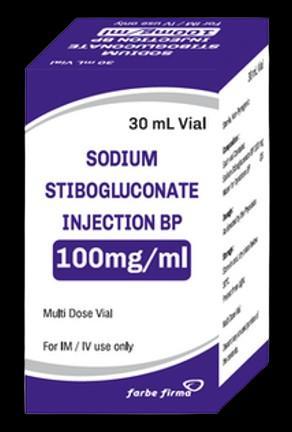





In an anecdote that Chris added (he had been in Afghanistan with the Marines), and as fitness buffs, he smiled as he said, “Marines have to run, you know.” They had a desert running track bulldozed out for them to run around in a secured area, right through the heart of a gerbil habitat, and the gerbils’ passenger Phlebotomus flies jumped ship to infest the Marines. This made for an instant epidemic in a wellcontrolled population under observation (and orders.) This ready-made controlled mini-epidemic made for a neat small study, so the data were gathered by the military treating physician, and shown to a passing tropical medicine consultant. Apparently, the treating Army physician was startled to later encounter the data from his experience published without reference to him. This is not an unknown phenomenon in the Paper Chase world.
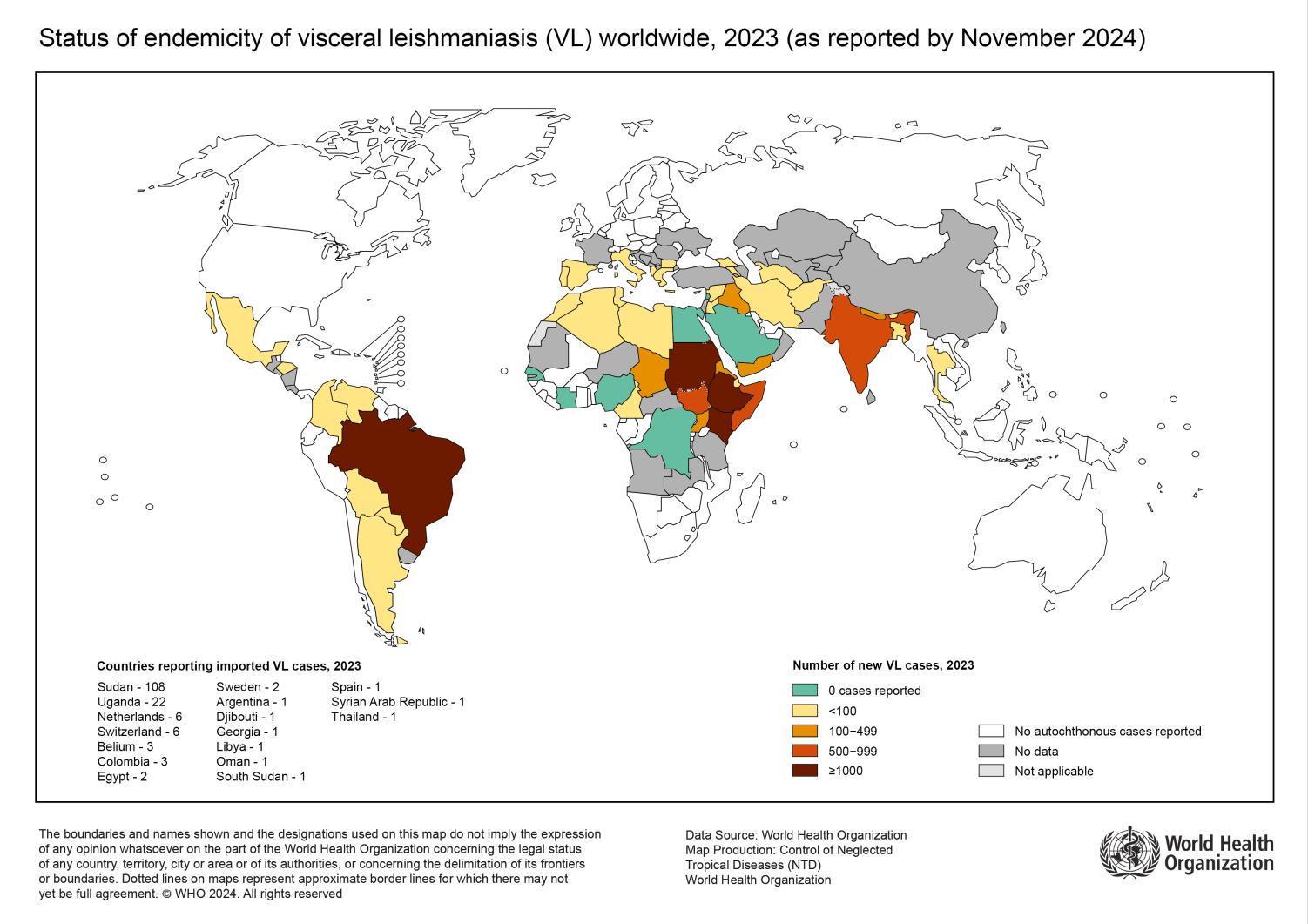





Numerous studies touting the efficacy of tranexamic acid (TXA) in the control of hemorrhage have been published. This lifesaving drug took many decades to reach the level of popularity it currently enjoys, and it is now firmly ensconced within the 2023 WHO Essential Medications List.
One commonly-cited stipulation that is fundamental to proper use of TXA is the administration of the drug within three hours of the initiation of the clotting cascade, i.e., within three hours of bleeding onset.
A recent article in Transfusion1 by Barrett CD, et al seeks to explain the underlying reason for this three-hour window
The “stock answer” for the three-hour window appears in the article’s abstract: “If TXA is given more than 3 h after traumatic injury, there is a significant and paradoxical increased risk of death due to bleeding.”
Subsequently, the authors delve into the pathophysiological consequences of delayed TXA administration: “The reason underlying the deleterious effect of TXA when given later than 3 h remains elusive, but preclinical studies suggest that this may be related to a delayed surge in urokinase (uPA) expression and changes in its conformation that promote plasmin activity, leading to bleeding.”
Notwithstanding these studies, the article concludes with, “ it remains to be determined when TXA is safe and effective to use beyond 3 h from severe polytrauma this question needs to be addressed via a randomized clinical trial. While awaiting a trial to clarify this clinical paradox, the decision to use TXA beyond 3 h from injury in complex polytrauma patients should be made on a case-by-case basis that carefully considers the patient's overall clinical situation.”
1 Barrett CD, Neal MD, Schoenecker JG, Medcalf RL, Myles PS.
Tranexamic acid in trauma: After 3 hours from injury, when is it safe and effective to use again?. Transfusion. 2024;64 Suppl 2:S11-S13. doi:10.1111/trf.17779





Jason Jarvis MSc 18D NR-Paramedic
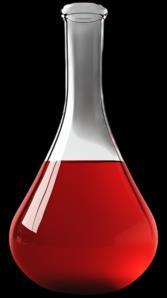





Every so often, we are gifted with a champion of science who not only qualifies as a bonafide Renaissance Man, but is wholly devoted to humanity and is blessed with a wonderful “gift of the gab ” Well-known examples include Carl Sagan and Neil deGrasse Tyson, the latter being the spiritual heir of the former.
To this list of science-communicator superstars, I would add the late Dickson Despommier.
Dr. Despommier was a prolific author whose works spanned multiple domains of knowledge. In addition, he was a professor of parasitology at New York City’s Columbia University medical school, cohost of two podcasts (This Week in Parasitism (TWiP) and This Week in Virology) and was an avid fisherman He devoted much of his career to the study of Trichinella spiralis, a nematode whose coiled form graces the logo of the TWiP podcast.
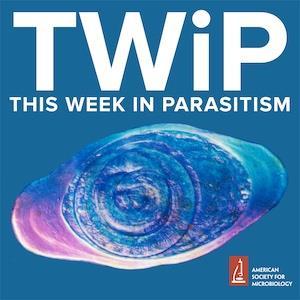
https://open.spotify.com/show/ 6kQocuUH2JdVu7uNTxDobN
Professor Despommier was profoundly aware of the interconnectedness of the natural world, and had much to say about medical ecology. Beyond mere appreciation for the web of life in which we live, Dickson’s talent as an educational raconteur invested many others with this appreciation and knowledge And thus, Dickson lives on in the hearts and minds of those of us lucky enough to have heard and read his many colorful tales.




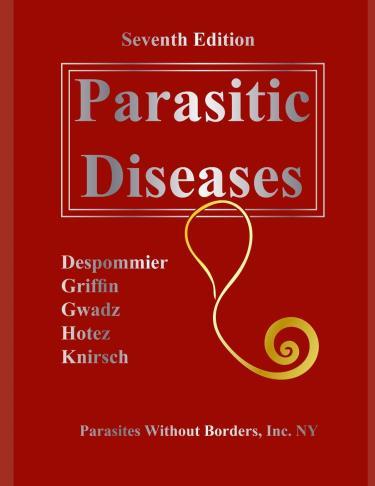




You are seeing a 31year-old female who complains of exertional dizziness. Based on her 12-lead, what condition do you suspect?
A. Hyperkalemia
B. WPW syndrome
C. Right axis deviation

D. Hypertrophic cardiomyopathy
After successfully resuscitating a 20-kg child who fell overboard in the Arctic waters of Canada’s Davis Strait, you have begun an infusion of norepinephrine to treat post-ROSC hypotension.
You have mixed 4 mg of norepinephrine into 1 liter of normal saline, and are using a 60 gtt/mL giving set.
At 0.3 μg/kg/minute, how many minutes total will you be able to maintain this infusion? Assume 1,000 mL total volume.
This arthropod is a potential vector for which of the following diseases?
A. Loiasis
B. Scrub typhus
C. African trypanosomiasis
D. Crimean-Congo hemorrhagic fever







C-med° alpha
available at www.cosinuss.com/en

The c-med alpha is a class IIa medical measuring device that generates continuous data streams of three important vital signs:
• Core body temperature
• Heart rate
• SpO2





https://open.spotify.com/episode/0XgeO6o6T5sLxFCjRq1GIL
This week, Aebhric O’Kelly talks with Dr. Derrick Tin, a professor of critical care and director of counterterrorism medicine at Harvard University, and discusses the multifaceted field of disaster medicine. He explains the importance of providing quality care in resource-limited environments and the various pathways for medical professionals to get involved in this specialty. Dr. Tin shares his journey from critical care to disaster medicine, emphasizing the need for practical training and the psychological aspects of working in disaster scenarios. He also highlights the significance of mentorship and the evolving nature of disaster medicine as a recognized subspecialty.
Disaster medicine focuses on providing care in resource-limited environments
Soft skills are crucial for disaster medicine specialists
There are various pathways to enter disaster medicine, including courses and fellowships
Critical care experience is valuable in disaster medicine
Training should include practical, hands-on experiences
Mental health support is essential for disaster responders
Disaster medicine should be integrated into medical school curricula





World Extreme Medicine
Event medicine in the great outback with Dr. Prashan Kuruppu
https://open.spotify.com/episode/0wWAjHvDGLZcpn8oi5qQT1

Paramedic Mindset Episode 34
Derrick McManus: Human durability and resilience from a survivor of 14 gunshot wounds
https://open.spotify.com/episode/4O8cSS6GgCJvBge1Dx2IXf

Prolonged Field Care Episode 220
Long-acting opioids
https://open.spotify.com/episode/2eYxPFLHXSyge8Li3E1UA7







Journal of Paramedic Practice
Pawley S, Worthington J. Intranasal ketamine analgesia for nonphysician prehospital clinicians. Journal of Paramedic Practice
Published online December 6, 2024. doi:10.12968/jpar.2024.0053
ABSTRACT


Prehospital analgesia is often under-administered within the UK for various reasons – especially within the paediatric population Several analgesic options are available in the ambulance service with ketamine being a versatile medication often used by prehospital clinicians who have undergone additional training and governance with the use of a patient group direction The options for non-invasive analgesia are limited within the ambulance service, even more so for the paediatric population or for non-compliant patients Intranasal administration is becoming more popular as a route of medication administration for both in-hospital and prehospital clinicians Intranasal analgesia has been well-researched within the in-hospital environment and has shown that IN ketamine is a viable and effective option for providing safe rapid analgesia.


Military Review
Brown S, et al. Guerilla casualty care nodes and web networks on the future battlefield. Military Review. Published online March 2025. https://www.armyupress.army.mil/journals/military-review/online-exclusive/2025ole/guerilla-casualty-care/
The conflict in Ukraine has illustrated how novel technologies such as antiaccess/area denial systems, long-range precision fires, and unmanned combat aerial vehicles threaten the unopposed aeromedical and tactical evacuation of injured warfighters. These advancements have changed the nature of war through the generation of immense casualty numbers, the need for prolonged casualty care over numerous days, limited medical resupply, and reduced access to surgical support within the “golden hour.” Figure 1 illustrates several of these unique features and their consequences. Furthermore, in Ukraine, Red Cross-marked vehicles have been tracked by drones as they returned to treatment sites, identifying their locations and then illegally targeting these areas with artillery fires. Similarly, the conflict in the Gaza Strip following the attack on 7 October 2023 has shown that healthcare providers and facilities may not be spared from hostilities. Thus, on the modern battlefield, surgical assets are at especially high risk, and the extensive training and resourcing provided to them means they cannot easily be replaced.



Nature
Hickson, S.M., Ledger, E.L. & Wells, T.J. Emerging antimicrobial therapies for Gram-negative infections in human clinical use. npj Antimicrob Resist 3, 16 (2025). https://doi.org/10.1038/s44259-025-00087-2
The growing problem of multi-drug resistance (MDR) is prevalent in Gram-negative infections, and the significant decline in antibiotic development poses a critical threat to global public health. Many emerging non-antibiotic therapies have been proposed, including phage therapy, anti-virulence agents, antimicrobial peptides, plasmapheresis, and immunotherapy options. To identify the therapies most likely to be the next immediate step in treatment for MDR Gram-negative infections, this review highlights emerging therapeutics that have either been successfully used for compassionate care or are currently undergoing clinical trials.


Reneau HB, Long BJ, Rizzo JA, Fisher AD, April MD, Schauer SG. An Analysis of Junctional Tourniquet Use Within the Department of Defense Trauma Registry. J Spec Oper Med.
Published online December 17, 2024. doi:10.55460/NDC5-J2LU
We analyzed the Department of Defense Trauma Registry (DoDTR) for casualties with documented JTQ application (2007-2023).
Of 48,301 encounters, 39 included JTQ placement The most common injury mechanisms were explosives (23), followed by firearms (15) The most common (AIS >3) serious injury sites were the extremities (21), followed by the abdomen (4) and skin (4) Only one patient died Of nine prehospital interventions, the most common were warming (21), limb tourniquet application (16), and intravenous fluid administration (11) The most common associated diagnoses were lower-extremity amputation (24), testis avulsion or amputation (11), pelvic fracture (9), and tympanic membrane rupture (9) The most common hospital procedures were a focused assessment with sonography in trauma (32), laparotomy (20), chest tube placement (13), fasciotomy (13), and arterial line placement (13)



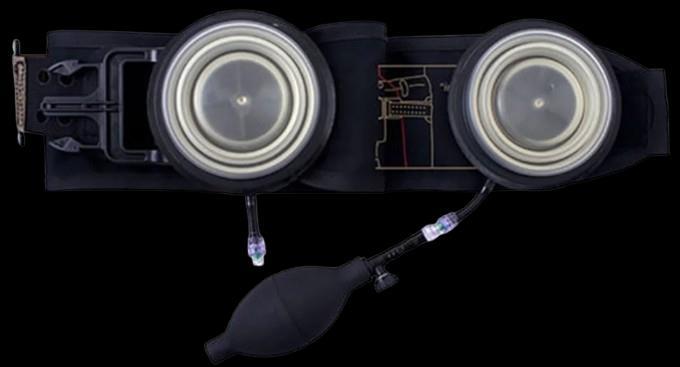

by Erik Bjarnason & Cathi Shaw
Review by Rhodri Jordan
Surviving Logan is a suspenseful retelling of mountaineer Erik Bjarnason's terrifying ordeal on Mount Logan, the second-highest peak in North America in the Yukon Territory Coauthored with Cathi Shaw, the book tells a tale of survival from an extratropical cyclone that stranded Bjarnason and his team at the summit, revealing the remarkable fortitude needed to endure such an experience. The story focuses on Bjarnason's expedition with the North Shore Rescue team, all experienced mountaineers and search & rescue personnel, to Mount Logan in 2005. They encountered a raging storm on their ascent that compelled them to struggle for survival

The story well brings out the hazardous conditions they endured, as well as the psychological and physiological aspects of surviving such an extremely hostile environment.
The book explores the themes of adversity, friendship, and the indomitable nature of the human spirit It is a close analysis of the psychology of climbers and the bonds that are created under dangerous conditions. The book also deals with the aspect of recovery and how trauma can affect one's personal and professional life. Authors Bjarnason and Shaw use a gripping and fast-paced writing style that effectively communicates the urgency and immediacy present in the climbers' situation. The story is simple, with emphasis on the factual elements and emotional responses without embellishments. This helps it hold the readers' interest and keep them fascinated, a must-read for fans of adventure
The book has been well received by the readers, particularly those with interests in mountaineering and adventure It has been commended for the authentic representation and realistic approach to a true survival tale. Critics have pointed out that the book is not a mountaineering guidebook but offers an insightful perspective on the predicaments of the climbers One of the book's strengths is that it can convey the sheer sense of experience and feeling that goes into surviving a natural disaster. Some readers, though, will find the tale too concentrated on the technical details of the climb, to the detriment of the wider appeal of the story for readers less enamored of the specifics of climbing
In total, "Surviving Logan" is a thrilling and uplifting tale, revealing the resilience of the human spirit amidst unusual adversity. Regardless of whether one is a mountaineering enthusiast or merely a grateful reader of survival literature, the book offers a suspenseful and thought-provoking reading experience.




The College of Remote and Offshore Medicine Foundation is an academic not-forprofit organisation for healthcare professionals working in the remote, offshore, military and security industries
The College was founded in 2016 and is governed by a Board of Regents supported by a faculty of medical professionals from four continents The College is a Higher Education Institution registered with the Malta Further and Higher Education Authority License No 2018-022
CoROM focuses on the improvement of medical training and the practice of healthcare for those working in remote, austere and resource-poor environments

We provide clinical research and academic training in Tropical Medicine for medical professionals located worldwide.
CoROM provides the Tropical Medicine module for the NATO Special Operations Combat Medic (NSOCM) course at the International Special Training Centre in Pfullendorf, Germany.
The tyranny of distance requires that medical professionals working in Africa, Asia and the Middle East must have the ability to provide best practice medicine for extended periods of time.
CoROM focuses on the practice of medicine with limited resources and the ability to improvise whilst providing excellent medical care.
The ability to provide care for critically ill casualties must be available regardless of location and resources.
CoROM provides Critical Care Transport curriculum and expands into the provision of critical care in less than ideal environments.










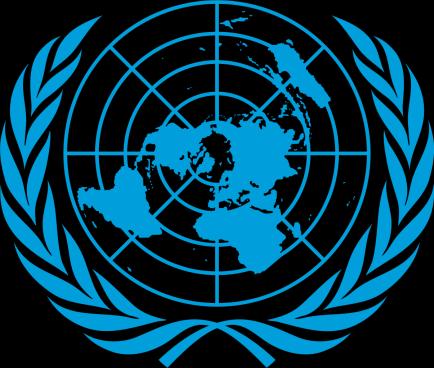







MFSLR 21 June
AEC Dates TBD
Tropical Medicine Dates TBD
MALTA AREMT 7-12 April
BSc RPP/Y1 module 12-31 May AREMT 8-13 Sept AEC 18-21 Sept TTEMS 22-26 Sept ICARE 29 Sept-3 Oct ATTEMS 6-10 Oct
BSc RPP/Y1 module 27 Oct-15 Nov RPP104 3-22 Nov
Medicine in the 30 Jan-1 Feb 2026 Mediterranean
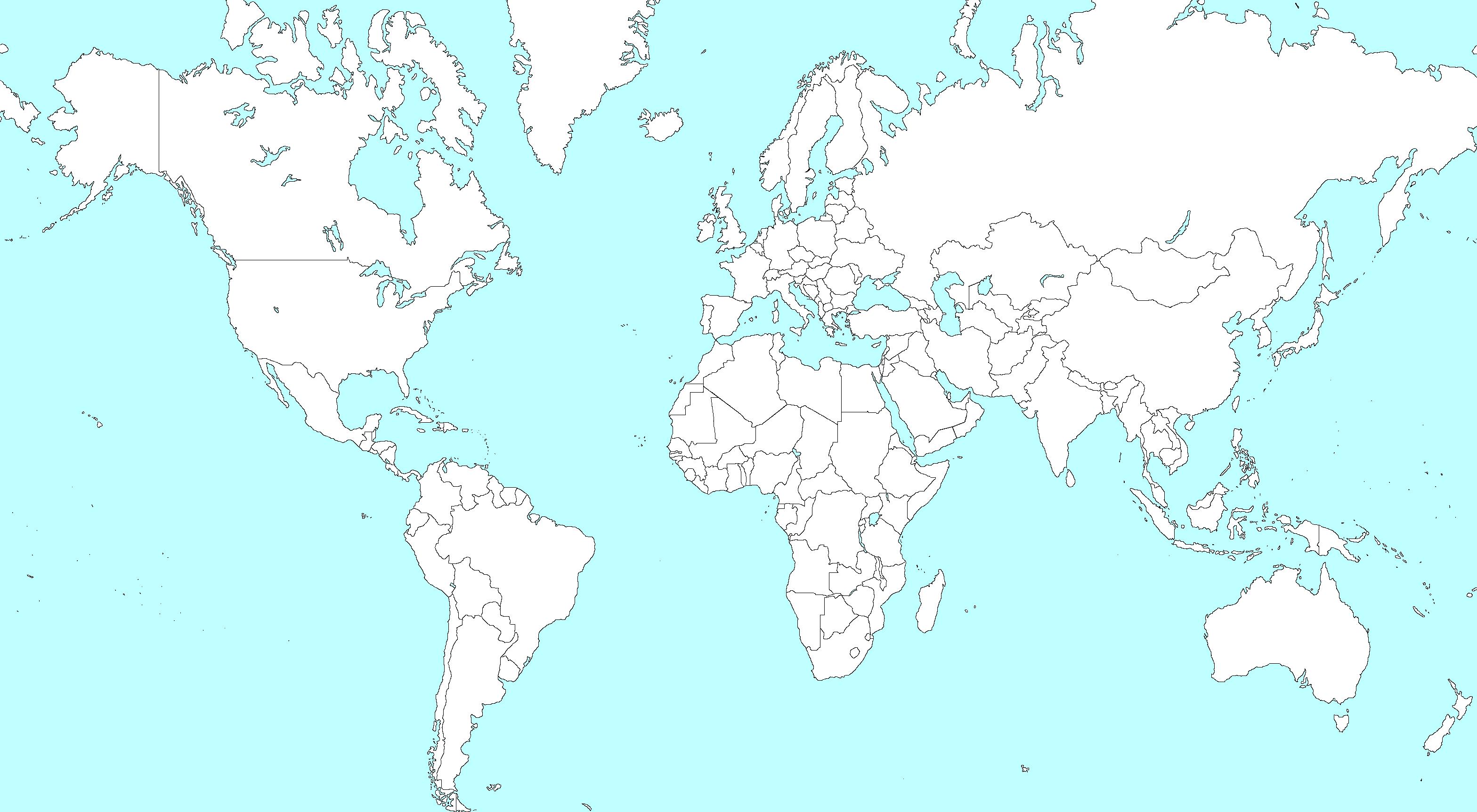
SOMSA Conference 5-9 May 2025
Tactical Medicine Review (Clark, HolmstrØm, Birks, Moront) Improvised Medicine (O’Kelly, Jarvis, Moront, Shertz, Loos)
Austere Clinical Laboratory Diagnosis (O’Kelly)
Bachelor of Science Remote Paramedic Practice
Master of Science in Austere Critical Care
Master of Global Health Leadership and Practice Doctor of Health Studies
Courses
Diploma Remote Paramedic
Higher Diploma of Remote Paramedic Practice
PG Diploma in Austere Critical Care
PG Cert Tropical Medicine & Hygiene
Award in Tropical & Expedition Medicine
Online
Critical Care Transport
Basics of Resource Limited Critical Care
Aeromedical Retrieval Medicine for Extreme Altitude
Pharmacology for the Remote Medic
Minor Illnesses Course
Minor Emergencies Course
Tactical Medicine Review
Kilimanjaro Christian Medical Center (KCMC), Tanzania
Remote clinics, Northern Tanzania
Ternopil State Medical University, Ukraine
Kibosho District Hospital, Kilimanjaro Ghana National Ambulance Service


ACC
AEC 22-25 May
Clinical Tropical Medicine Dates TBD
Acute Critical Care
AEC Austere Emergency Care




ACLS Advanced Cardiac Life Support
AHA American Heart Association
APUS Austere and Prehospital Ultrasound
AREMT Award in Remote Emergency Medical Technician
ATTEMS Advanced Tropical, Travel and Expedition Medical Skills
FiCC Foundations in Critical Care (RPP203)
IBSC International Board of Specialty Certifications
MFSLR Mastering Fundamentals of Skin Laceration Repair
PALS Paediatric Advanced Life Support
PARSIC Prehospital Airway and Rapid Sequence Induction course
PG Cert Postgraduate certificate
RMLS Remote Medical Life Support
RPP104 Fundamentals of Paramedic Practice (in-classroom)
SOMSA Special Operations Medical Association Scientific Assembly
TTEMS Tropical, Travel and Expedition Medical Skills



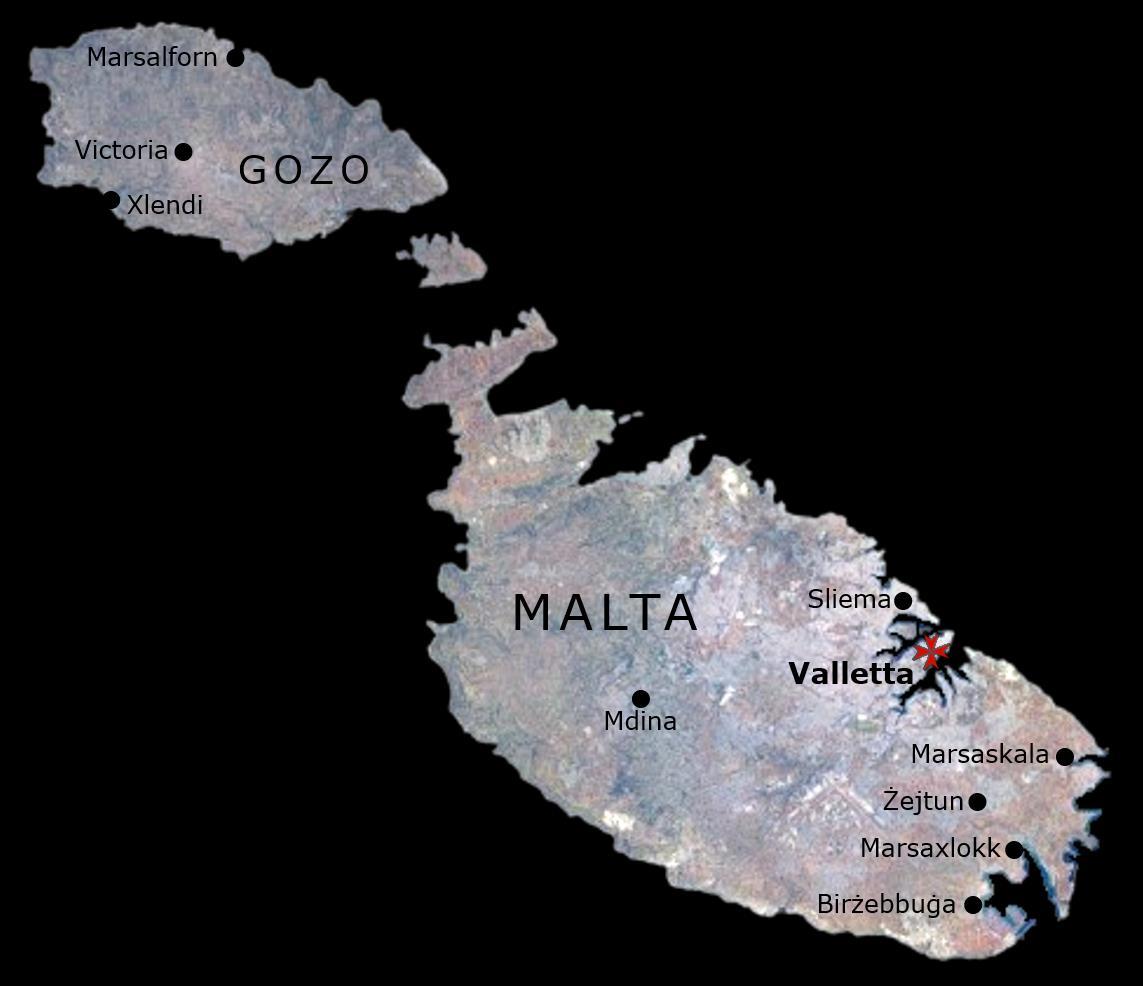




Mission to Heal goes where medical need is greatest. We visit remote regions to teach basic surgical skills to local healthcare practitioners so they can care for their community year-round. Due to our educational approach, we need a variety of expertise on these missions. We welcome the following specialists to volunteer with us:
Nurse Anesthetists
Tropical Medicine Specialists
Obstetricians & Gynecologists
Optometrists & Ophthalmologists
Dentists & Oral Surgeons
General Surgeons
OR Nurses
Triage Nurses
Medical & Dental Students
Residents
As you can see, it’s a wide-ranging list – but it’s not all inclusive. If you have a specialty that’s not listed here, but would love to volunteer with us, there is still a place for you! Why volunteer?
- Get a transformational learning experience where you learn just as much as you teach. - Experience a culture outside of your own.
- Experience how healthcare is practiced in other countries.
- Use your expertise to benefit the less fortunate.
As one of our volunteers said to us, “We want to volunteer with you because you actually do.”
Useful links:
Volunteer with Mission to Heal - https://missiontoheal.org/apply/ Volunteer FAQ’s - https://missiontoheal.org/faqs/ Our approach to missions - https://missiontoheal.org/approach/ Volunteer reflections - https://missiontoheal.org/blog/ Questions about M2H missions – samuel.jangala@missiontoheal.org
2025 Missions:
Kenya II April 11-27
Kenya III June 13-29
Kenya IV August 8-24


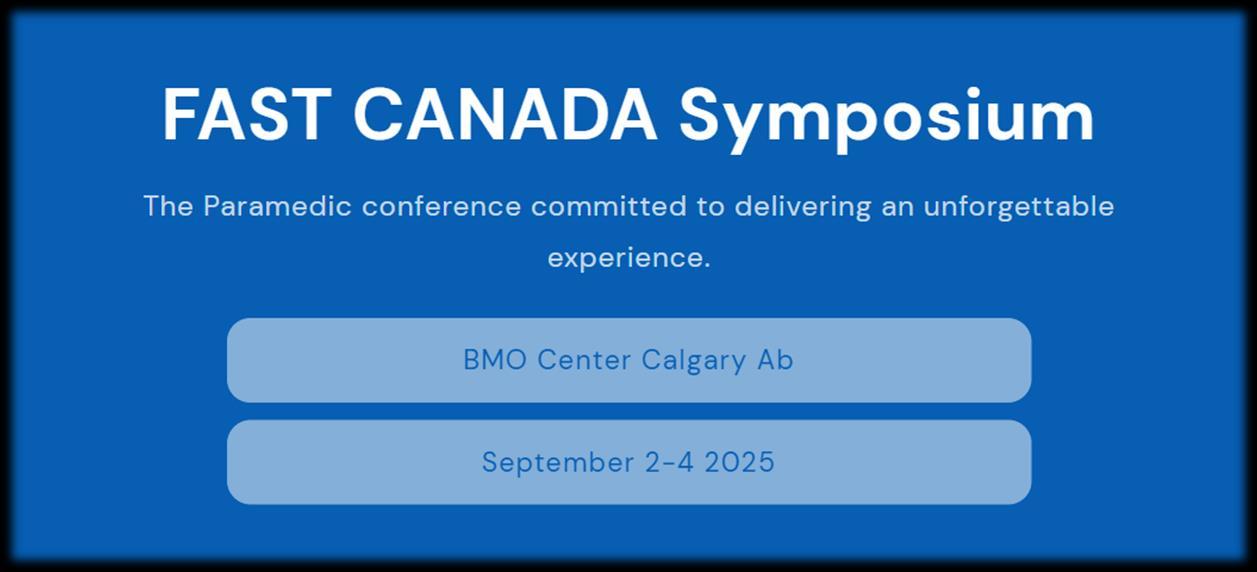
https://www.masteryourmedics.com/pages/fastcanada2025












Prolonged field care
Tropical medicine
Extended formulary
EMS drug cards
Calculators
Snakes & arthropods
ACLS & ECGs
Paediatric ALS
Paediatric diseases
OB/Gyn
Dentistry
Ultrasound
Dermatology & STIs
Field laboratory
Environmental medicine
Call-for-evacuation templates
Canine medicine
…and much more!








